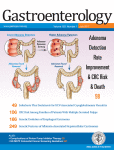 A former graduate student at the University of Hong Kong confessed to making “inappropriate modifications” to several figures in a 2013 paper in the Journal of Biological Chemistry (JBC).
A former graduate student at the University of Hong Kong confessed to making “inappropriate modifications” to several figures in a 2013 paper in the Journal of Biological Chemistry (JBC).
According to the retraction notice, the authors identified issues in 13 images while reviewing the data; the paper’s first author, Yingying Lu, copped to manipulating the figures. Even though “these modifications did not change the results or interpretations of this work,” the authors requested the paper be retracted.
The paper’s corresponding author, Jainbo Yue, previously based at the University of Hong Kong and now at the City University of Hong Kong, had nothing to add to the retraction notice, and told us that a “third person” is repeating the key experiments.
Here’s the retraction notice for “Two pore channel 2 (TPC2) inhibits autophagosomal-lysosomal fusion by alkalinizing lysosomal pH,” published in July: Continue reading Author admits to manipulating more than a dozen images in 2013 paper








